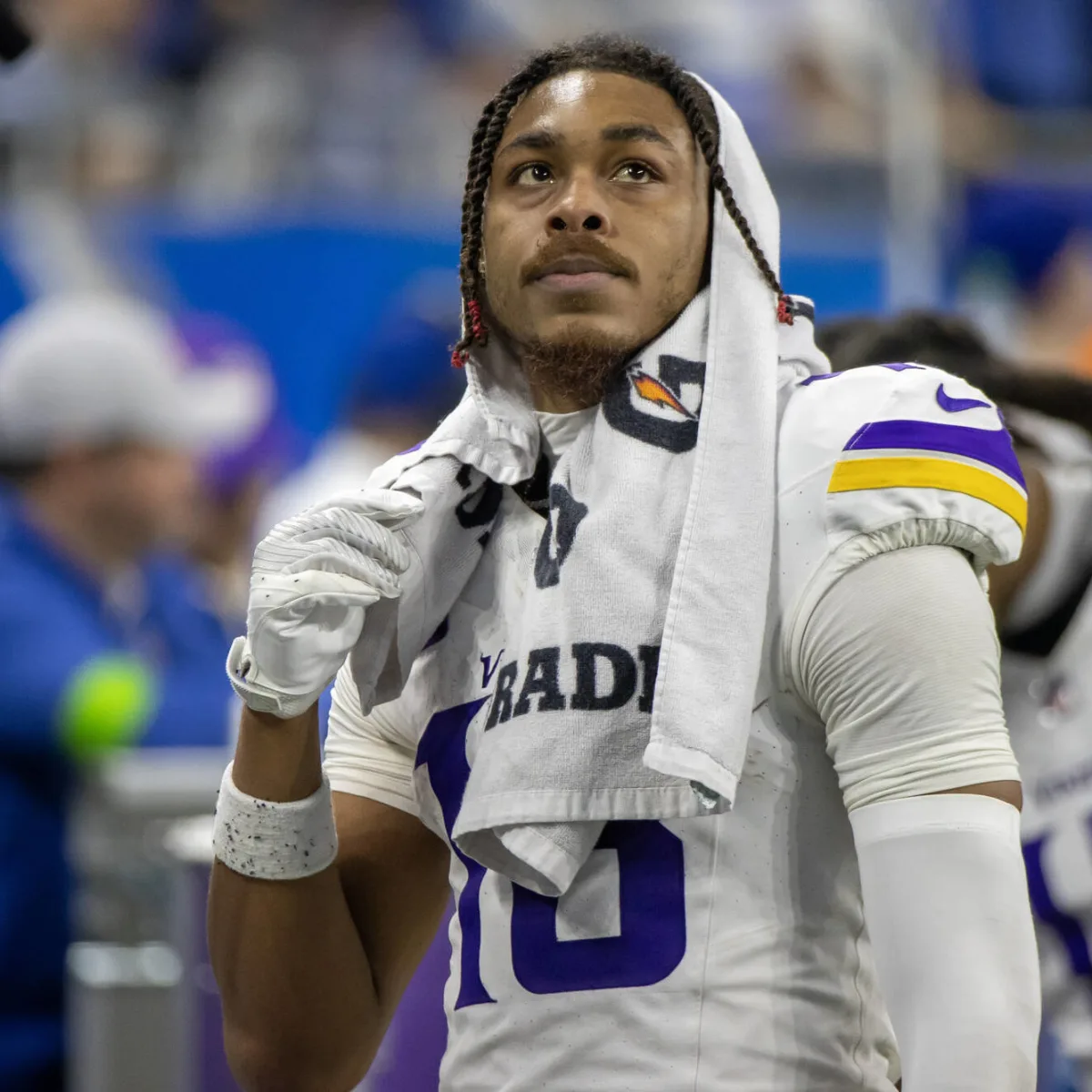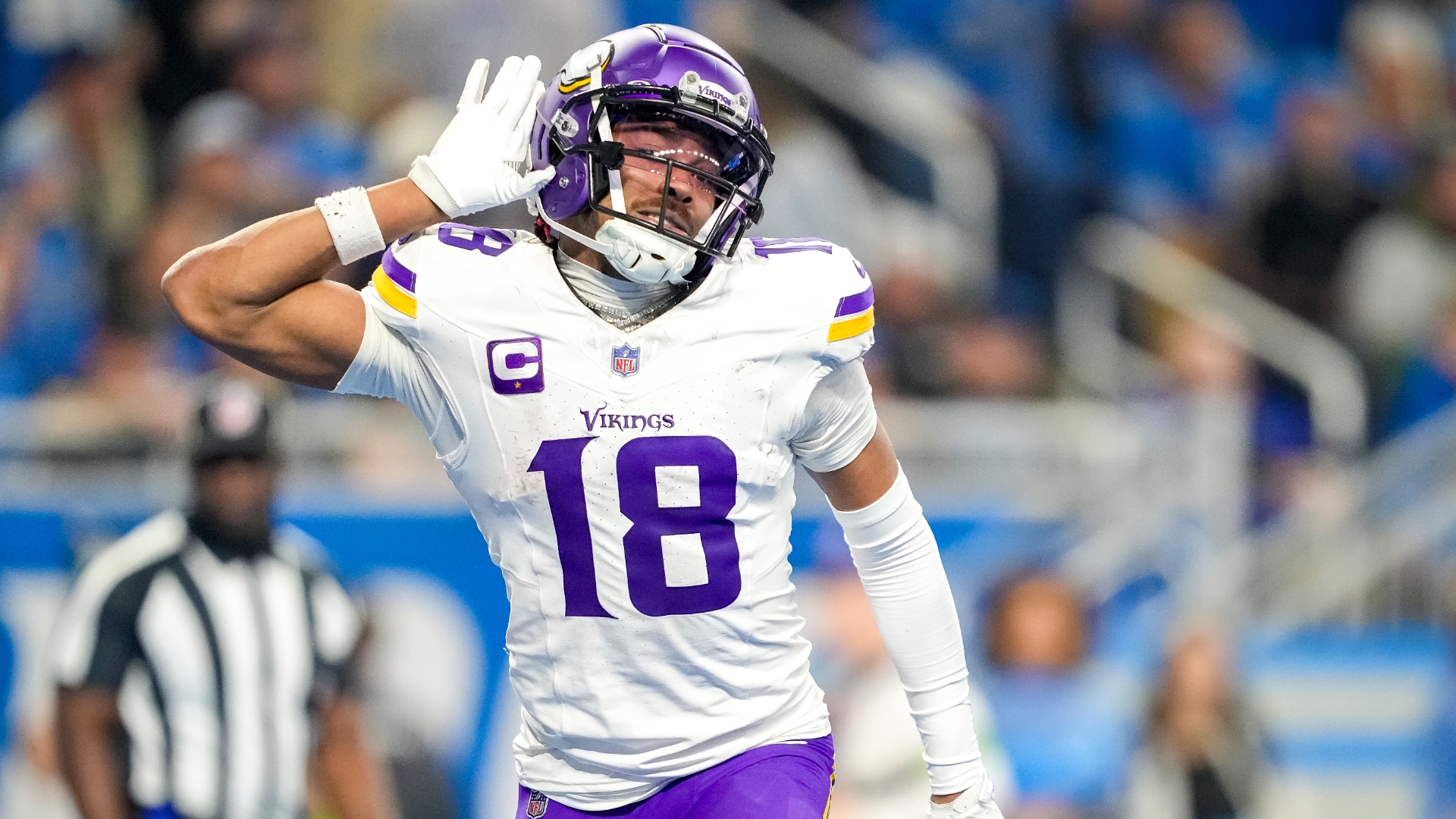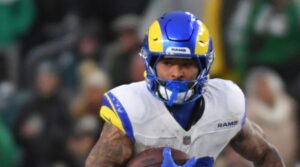
The Minnesota Vikings have not yet secured Justin Jefferson with a long-term contract, which could potentially make him the highest-paid non-quarterback in NFL history. This situation might have been a key factor behind a plan to trade him during or after the recent NFL Draft.
Charley Walters of The Pioneer Press reported on Sunday, May 26, that there was speculation in late April about the Vikings’ intentions to move up from their No. 11 draft position into the top five. Contrary to popular belief that they were targeting a franchise quarterback, the team was actually aiming to select LSU wide receiver Malik Nabers as Jefferson’s replacement.
“There was buzz at draft time that the Vikings wanted to move from No. 11 to No. 5, not to pick a QB but to get LSU wide receiver Malik Nabers, who was picked No. 6 by the [New York] Giants,” Walters wrote, according to The Purple Persuasion X account. “Had that trade occurred, Jefferson would have been traded and Nabers would have been the No. 1 receiver.”
It’s difficult to envision any team parting ways with a 24-year-old, three-time Pro Bowler and one-time All-Pro who is arguably the best receiver in the NFL. However, the magnitude of the contract Jefferson is reportedly seeking could drive an organization to consider such a move.
The Minnesota Vikings have found themselves in a challenging position by delaying the extension of Justin Jefferson’s contract. The NFL’s salary cap increased by $30 million from 2023 to 2024, boosting Jefferson’s negotiating leverage.
Adam Schefter reported on the May 22 edition of “SportsCenter” on ESPN that the impending deal is expected to make Jefferson the highest-paid non-quarterback in NFL history. This follows the San Francisco 49ers’ signing of edge rusher Nick Bosa to a five-year, $170 million contract ($34 million average annual value). Schefter’s report suggests Jefferson is seeking a contract worth around $35 million annually over at least five years.
Although Jefferson’s performance justifies a high salary, any contract can eventually exceed a player’s value in a salary cap sport, where teams have limited funds for their entire roster. The 2024 NFL salary cap is approximately $255 million per team, meaning Jefferson’s desired deal would consume nearly 14% of the Vikings’ cap space.
However, this type of contract could work for Minnesota given their current quarterback salary structure. Sam Darnold is on a one-year deal worth $10 million, and rookie J.J. McCarthy, the No. 10 overall pick, signed a four-year contract worth slightly over $5 million per season. Including the salaries for Nick Mullens and Jaren Hall, the Vikings are set to spend about $18 million on their four quarterbacks in 2024.
In contrast, nine NFL quarterbacks currently earn at least $45 million annually, with five surpassing $50 million per season. Minnesota could not afford Jefferson’s desired salary while paying a top-tier quarterback like Joe Burrow or Patrick Mahomes. However, with McCarthy and Hall as the only quarterbacks under contract beyond 2024, the Vikings have the flexibility to invest heavily in Jefferson without jeopardizing their long-term competitiveness, assuming McCarthy develops into a franchise quarterback.
Assuming Charley Walters’ report is entirely accurate, it opens an intriguing scenario regarding how the Vikings might have addressed their quarterback situation if they had traded the No. 11 pick to the Los Angeles Chargers for the No. 5 pick to select Malik Nabers.
A receiving lineup featuring Nabers, Jordan Addison, and two-time Pro Bowler T.J. Hockenson would have created a potent and cost-effective pass-catching unit for the next few seasons. However, this strategy would have precluded the Vikings from trading up from No. 11 to No. 10 to draft J.J. McCarthy.
Trading Justin Jefferson likely would have yielded at least two or three first-round picks. Doing so on draft night would have provided the Vikings with the leverage to secure McCarthy or possibly Bo Nix from Oregon, who was drafted by the Denver Broncos at No. 12 overall.
Alternatively, Minnesota might have opted to rely on Sam Darnold for the season, holding out for the 2025 draft or awaiting an opportunity to acquire a quarterback via trade or free agency. The draft capital gained from trading Jefferson would have given the Vikings substantial leverage to pursue a top quarterback in the market.
Currently, Jefferson seems to hold the upper hand as negotiations continue. He is entering the fifth-year option of his rookie contract, which pays him $19.75 million in 2024. Beyond that, unless the Vikings use the franchise tag, he will become a free agent in 2025. The franchise tag would extend his contract for one year at a high cost, reflecting the average of the top five salaries at his position.
While this is a feasible option, Jefferson’s growing impatience suggests it would be wise for the Vikings to secure his contract this summer, given that they now have the financial flexibility to do so. Delaying could result in an even higher price tag in the future.

/cdn.vox-cdn.com/uploads/chorus_image/image/73054294/1921261050.0.jpg)





